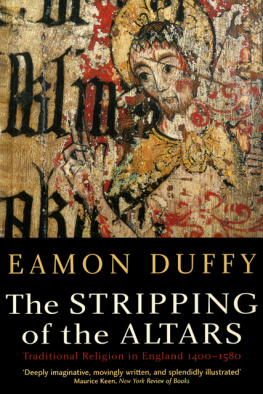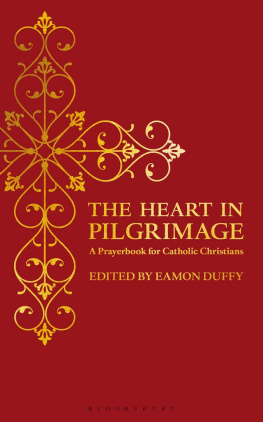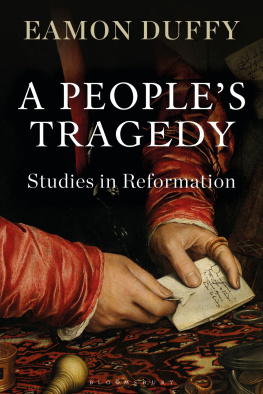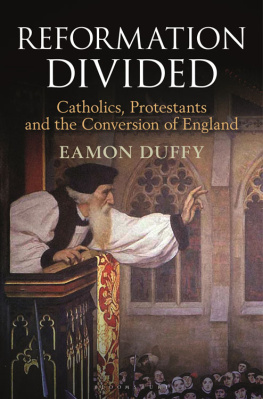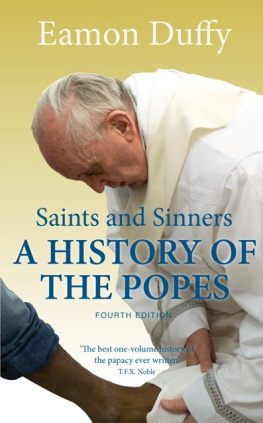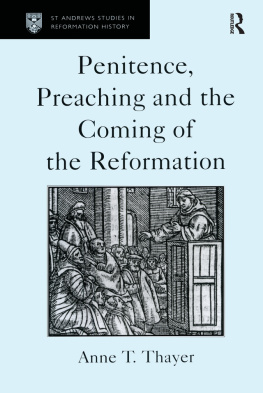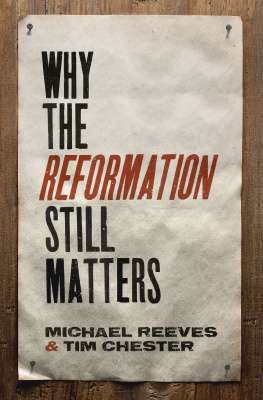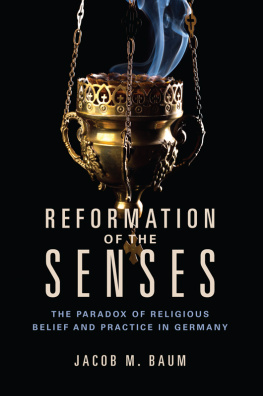Eamon Duffy - The Stripping of the Altars
Here you can read online Eamon Duffy - The Stripping of the Altars full text of the book (entire story) in english for free. Download pdf and epub, get meaning, cover and reviews about this ebook. publisher: Yale University Press, genre: Religion. Description of the work, (preface) as well as reviews are available. Best literature library LitArk.com created for fans of good reading and offers a wide selection of genres:
Romance novel
Science fiction
Adventure
Detective
Science
History
Home and family
Prose
Art
Politics
Computer
Non-fiction
Religion
Business
Children
Humor
Choose a favorite category and find really read worthwhile books. Enjoy immersion in the world of imagination, feel the emotions of the characters or learn something new for yourself, make an fascinating discovery.
- Book:The Stripping of the Altars
- Author:
- Publisher:Yale University Press
- Genre:
- Rating:5 / 5
- Favourites:Add to favourites
- Your mark:
- 100
- 1
- 2
- 3
- 4
- 5
The Stripping of the Altars: summary, description and annotation
We offer to read an annotation, description, summary or preface (depends on what the author of the book "The Stripping of the Altars" wrote himself). If you haven't found the necessary information about the book — write in the comments, we will try to find it.
The Stripping of the Altars — read online for free the complete book (whole text) full work
Below is the text of the book, divided by pages. System saving the place of the last page read, allows you to conveniently read the book "The Stripping of the Altars" online for free, without having to search again every time where you left off. Put a bookmark, and you can go to the page where you finished reading at any time.
Font size:
Interval:
Bookmark:

Reviews of the first edition:
This book will afford enjoyment and enlightenment to layman and specialist alike. Duffy sweeps the reader along by his lively and absorbing detail, his piercing insights, patient analysis, and his vigour in debate. Peter Heath, Times Literary Supplement
Deeply imaginative, movingly written, and splendidly illustrated. Duffy's analysis, in his richly detailed book, of what happened at the Reformation to the religion of the laity of England carries conviction. Maurice Keen, New York Review of Books
Revisionist history at its most imaginative and exciting. [An] astonishing and magnificent piece of work. Edward T. Oakes, Commonweal
Duffy wants to show the vitality and appeal of late medieval Catholicism and to prove that it exerted a diverse and vigorous hold over the imagination and loyalty of the people up to the very moment of Reformation. He succeeds triumphantly. Susan Brigden, London Review of Books
A landmark book in the history of the Reformation. Ann Eljenholm Nichols, Sixteenth Century Journal
Sensitively written and beautifully produced, this book represents a major contribution to the Reformation debate. Norman Tanner, The Times
With the publication of this book, a kind of map or illustrated atlas of late medieval English Christianity, English Reformation studies will never be the same again. Patrick Collinson, Times Higher Education Supplement
Duffy offers an unrivaled picture of late medieval parochial religion, with all its ritual symbolism and visual imagery.Keith Thomas, The Observer
This is a quite remarkable, indeed brilliant, study, which puts flesh on the bones of the so-called revisionist interpretation of the English Reformation. This is essential reading for all those who wish to understand late medieval religion and the means by which it was undermined against the wishes of the vast majority of its practitioners. Christopher Harper-Bill, Theology
This magnificently produced volume must rank as one of the most important landmarks in the study of late medieval English religion to have hitherto appeared, and it is unlikely to be superseded for quite some time. The sheer scale of Duffy's achievement, the enormous value of the information he provides and the vigour and elegance with which he presents it, make his book, in every sense, a must.Robert Peters, History Review
This is a monumental work Duffy writes elegantly, handling complex and controversial subject matter in a way at once sober and factual. It should be read by every historian of the medieval and early modern periods, by every Catholic, indeed by every Christian with a serious interest in the history of Christendom. Evelyn Birge Vitz, Theological Studies
A valuable source of information supported with excellent illustrations and bibliography. Choice
A very illuminating and satisfying book, which takes a major step towards better understanding of the English reformation. Margaret Aston, English Historical Review
This is a work of exceptional importance, demonstrating massive erudition, great sympathy, and eloquence of style. It presents a marvelously detailed new picture of traditional religious belief and practice in England during the century prior to the Reformation and it shows exactly when and how the customs of faith and ceremony were stripped away in the sixteenth century. Our interpretation of the Reformation and our understanding of Tudor religion will never be the same. Stanford Lehmberg, Sixteenth Century Journal
Scholarly, compulsively readable and revolutionary in thesis Scholars of the period will enjoy the controversy and the general reader will be carried back empathetically to the days when religion was not as we know it now.Gillian Mottram, Faith and Freedom
[This book] at last gives the culture of the late Middle Ages in England its due, and helps us to see the period as it was and not as Protestant reformers and their intellectual descendants imagined it to be. A monumental and deeply felt work.Gabriel Josipovici, Times Literary Supplement
An outstanding history of the English Reformation.Commonweal


Copyright 1992 by Yale University
Second edition 2005
4 6 8 9 7 5
All rights reserved. This book may not be reproduced in whole or in part, in any form (beyond that copying permitted by Sections 107 and 108 of the U.S. Copyright Law and except by reviewers for the public press), without written permission from the publishers.
Designed by John Nicoll
Set in Linotron Bembo by Best-set Typesetters Ltd, Hong Kong
Printed in China through Worldprint
ISBN 978-0-300-10828-6 (pbk)
Library of Congress Catalog Number 9250579
Deus, qui nos patrem et matrem honorare praecepisti, miserere clementer animabus patris et matris meae, eorumque peccata dimitte, meque cum illis in aeternae claritatis gaudio fac vivere.
Per Christum Dominum Nostrum. Amen.
From the Mass for the Dead,
Missale ad Usum Insignis et Praeclarae Ecclesiae Sarum,
ed. F. H. Dickinson, 186183, col. 873*.
CONTENTS
The Ceremonies of Holy Week
Sacred Place, Sacred Time
Sacred and Secular Time?
Priests, People and Catechesis
The Impact of Catechesis: Imagery and Dramatic Evidence
The Impact of Literacy: Lay Didactic and Devotional Collections
The Coming of Print
Seeing the Host
Seeing and Believing
Dredd into Sweetness
Spectators or Participants? Lay Religion and the Mass
Praying the Mass: the Individual's Experience
Praying the Mass: Privatization?
Praying the Mass: the Parochial Experience
Making the Peace
Gild and Parish
The Saints in their Images
The debt of interchanging neighbourhood
Old and New Allegiances
Holiness and Help
Coins, Candles and Contracts
Gift, Grace and Fellow-feeling
Pilgrimage
St Walstan of Bawburgh
The Primer and Lay Prayer
Devotions to the Passion
The Mass of St Gregory and the Wounds of Jesus
The Seven Words on the Cross
Devotions to the Virgin
Pardons and Promises
The Image of Death
The Hour of Death
Ars Moriendi
Death and Memory
Purgatory: Ante-room of Heaven or Outpost of Hell?
Christendome and Kindred
Ways of Deliverance: Shortening the Paints of Purgatory
The Works of Mercy
The Rejection of Penny Doles
Bridges and Highways
Prayers and Supplications
Religious Priorities in Marian England
The Marian Primers
The Programme in the Parishes
The Visitation of Kent, 1557
ACKNOWLEDGEMENTS
In the course of more than seven years work on this book, I have accumulated many debts. Much of that indebtedness has grown from the writings, conversations and arguments of workers in the same or related fields: Margaret Aston, John Bossy, Susan Brigden, Pat Collinson, Christopher Haigh, Dorothy Owen, Miri Rubin, Jack Scarisbrick, Bob Scribner, and Margaret Spufford have all helped to stimulate my thoughts and provoke me to question, though they will not always approve of the answers. Ann Nichols and Dick Pfaff not only shared their learning in late medieval liturgy, iconography, and sacramental theology, but drove with me through rural East Anglia in search of its material traces.
Next pageFont size:
Interval:
Bookmark:
Similar books «The Stripping of the Altars»
Look at similar books to The Stripping of the Altars. We have selected literature similar in name and meaning in the hope of providing readers with more options to find new, interesting, not yet read works.
Discussion, reviews of the book The Stripping of the Altars and just readers' own opinions. Leave your comments, write what you think about the work, its meaning or the main characters. Specify what exactly you liked and what you didn't like, and why you think so.

